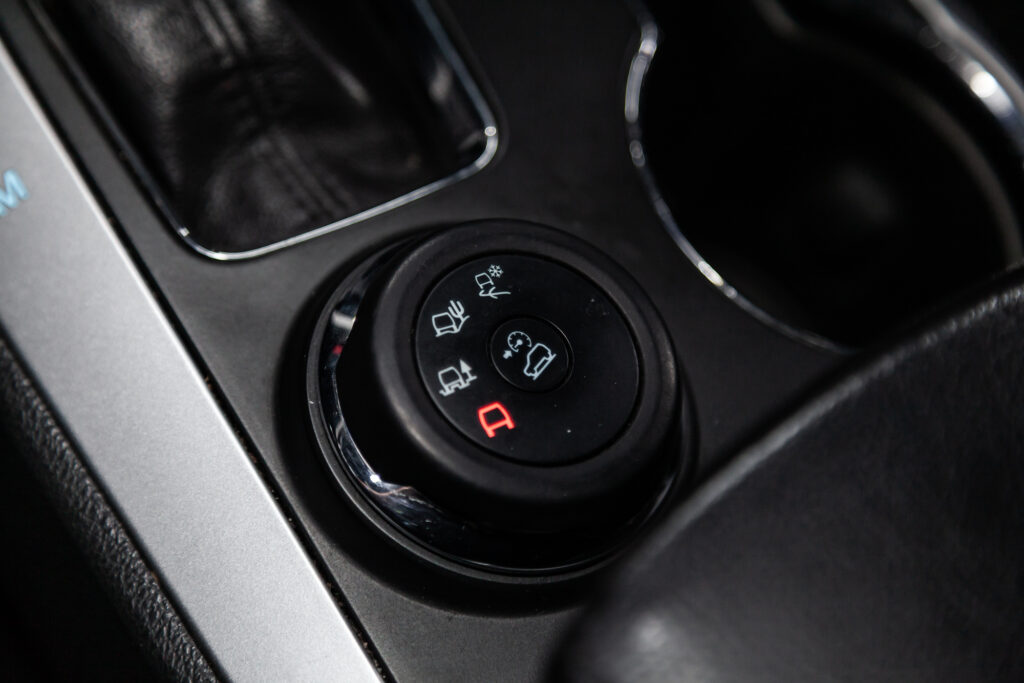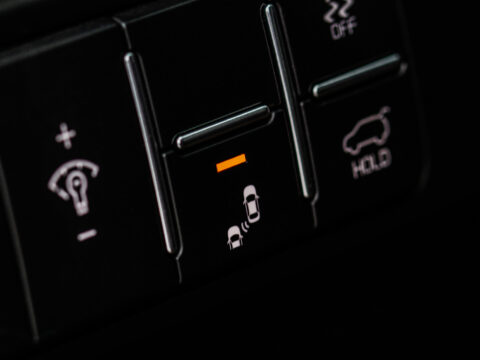The Ford Explorer’s Terrain Management System is a key feature that enhances its versatility, but it is not immune to faults. In this blog, we will explore the causes and solutions for the problems surrounding the Terrain Management System, to ensure a smooth and confident drive in any road condition.

Contents
Ford Explorer Terrain Management System Overview
The Terrain Management System in the Ford Explorer is a cutting-edge feature that enables drivers to choose multiple driving modes to best suit the current road conditions.
This technology is made to make it easier and more stable for drivers to navigate different terrains like snow, mud, sand, or rocks.
The system adjusts the engine, transmission, and traction control systems with the turn of a dial to provide the best performance for the chosen driving mode. As a result, driving becomes more certain and competent, whether you’re negotiating challenging off-road tracks or simply navigating through bad weather.
Using sensors and algorithms, the Ford Explorer’s Terrain Management System continuously monitors a variety of vehicle components and makes adjustments as needed for optimum performance. The technology modifies the traction control settings, transmission shift points, and throttle response to suit the circumstances when a driving mode is chosen.
Here’s how to use the Terrain Management System in your Ford Explorer:
- Find the dial on your console that says 4WD or AWD.
- Press the “TM” button in the middle of the dial.
- The Terrain Management System mode will be shown on the driver’s information screen.
- Press the “TM” button again to change the mode. Press over and over until you get to the TMS setting that matches the terrain you want.
For Normal Mode, you must choose the 2H transfer case mode. The other three choices will work with either 4HI or 4LO, but not with 2HI.
For instance, if you choose the “Sand” mode, the system will lower the engine’s power and modify the traction control to improve stability and prevent wheel spin in soft, slick sand. In order to help the car retain grip on slick, snow-covered roads, the system will adjust the traction control and throttle response settings if you choose “Snow.”
The Electronic Stability Control (ESC) system, Anti-lock Brake System (ABS), and All-Wheel Drive (AWD) are a few other cutting-edge technologies that the Terrain Management System collaborates with to give an integrated and optimal driving experience.
What Does It Mean When It Says Terrain Management System Fault?
The notice “Terrain Management System Fault” that appears on your Ford Explorer indicates that there is a problem with the system that is preventing it from working properly.
The Terrain Management System Fault needs to be fixed as soon as possible because it could have an adverse effect on your car’s performance and safety. It’s advised to take your Ford Explorer to a licensed dealership or mechanic for diagnosis and repair if the error message occurs. They will be able to identify the precise cause of the issue and offer a fix.

The 4 Modes of Terrain Management System
The Ford Explorer’s TMS has four distinct modes depending on the weather and road conditions:
Normal
The Normal mode is designed for everyday driving on paved roads and provides the best balance of fuel efficiency and performance.
Sport
Sport mode is optimized for performance driving, providing a more aggressive throttle response and sportier transmission shifts.
Slippery
Use the slippery mode if your driving through snow or rain. It provides enhanced traction control and stability to help maintain control on slippery roads.
Deep Snow/Sand
This mode is designed for driving on loose, sandy surfaces, reducing engine power and adjusting traction control to provide more stability and prevent wheel spin.
Ford Explorer Terrain Management System Causes
The Ford Explorer’s Terrain Management System fault can be caused by a number of factors, including:
Software Issues
The Terrain Management System is controlled by software that can sometimes malfunction or become outdated, causing the system to fail. A software update from a Ford dealership or mechanic can often resolve these issues.
Sensor Problems
The Terrain Management System uses various sensors to monitor the vehicle’s systems and adjust them as necessary. If one of these sensors fails or becomes damaged, it can cause the system to display a fault message.
Electrical Issues
The Terrain Management System relies on electrical connections and wiring to operate properly. If these connections become damaged or corroded, it can result in a fault message being displayed.
Hardware Malfunction
The Terrain Management System includes various components such as control modules, actuators, and solenoids that can wear out or malfunction over time. If one of these components fails, it can cause the system to display a fault message.
How To Fix Terrain Management System Fault on a Ford Explorer?
Fixing a Ford Explorer’s Terrain Management System error will depend on what caused it. But there are some general things that can be done to fix the problem:
- Check for Software Updates: Sometimes, the Terrain Management System fault can be fixed with a simple software update. You can find out if there are any changes by calling your Ford dealership or going to the Ford website.
- Change the sensors: If the problem is caused by a sensor, it will need to be changed. Your Ford dealer or mechanic will be able to figure out which sensor is causing the problem and replace it if necessary.
- Repair Electrical Connections: If the problem is caused by a broken or corroded electrical connection, it will need to be fixed or replaced. Any electrical problems can be found and fixed at your Ford dealership or by a mechanic.
- Replace Hardware Components: If a part of the Terrain Management System has broken, it will need to be replaced. Your Ford dealer or mechanic will be able to figure out which part is broken and replace it as needed.
If the Terrain Management System fault message still shows up after you’ve done these things, you should take your Ford Explorer to a certified dealership or mechanic for further diagnosis and repair. They will be able to find any other problems and give you a way to fix them so that your car works well and safely.
Can You Fix the Fault Yourself?
Checking software upgrades and electrical connections will help fix your Ford Explorer’s Terrain Management System issue. However, identifying and fixing a Terrain Management System problem may require specific knowledge and equipment.
Fixing the problem yourself, especially if you lack skill or tools, can be unsafe and damage your car. It may void your warranty and make insurance coverage harder.
Conclusion
The Terrain Management System in the Ford Explorer is a high-tech feature that improves performance and safety in a variety of driving conditions. But if something goes wrong with the system, it can cause a warning message to be shown. The problem could be caused by software problems, sensor problems, electrical problems, or a problem with the hardware itself.
For the best diagnosis and repair, you should take your Ford Explorer to a certified dealership or mechanic. They will have the knowledge, tools, and access to the latest software and parts that they need to figure out what’s wrong and fix it. Even though you can do some basic troubleshooting steps, trying to fix the problem yourself can be dangerous and may cause your car to break down even more.
Ultimately, it’s important to fix a problem with your Ford Explorer’s Terrain Management System as soon as possible to make sure it runs well and keeps you safe on the road.














